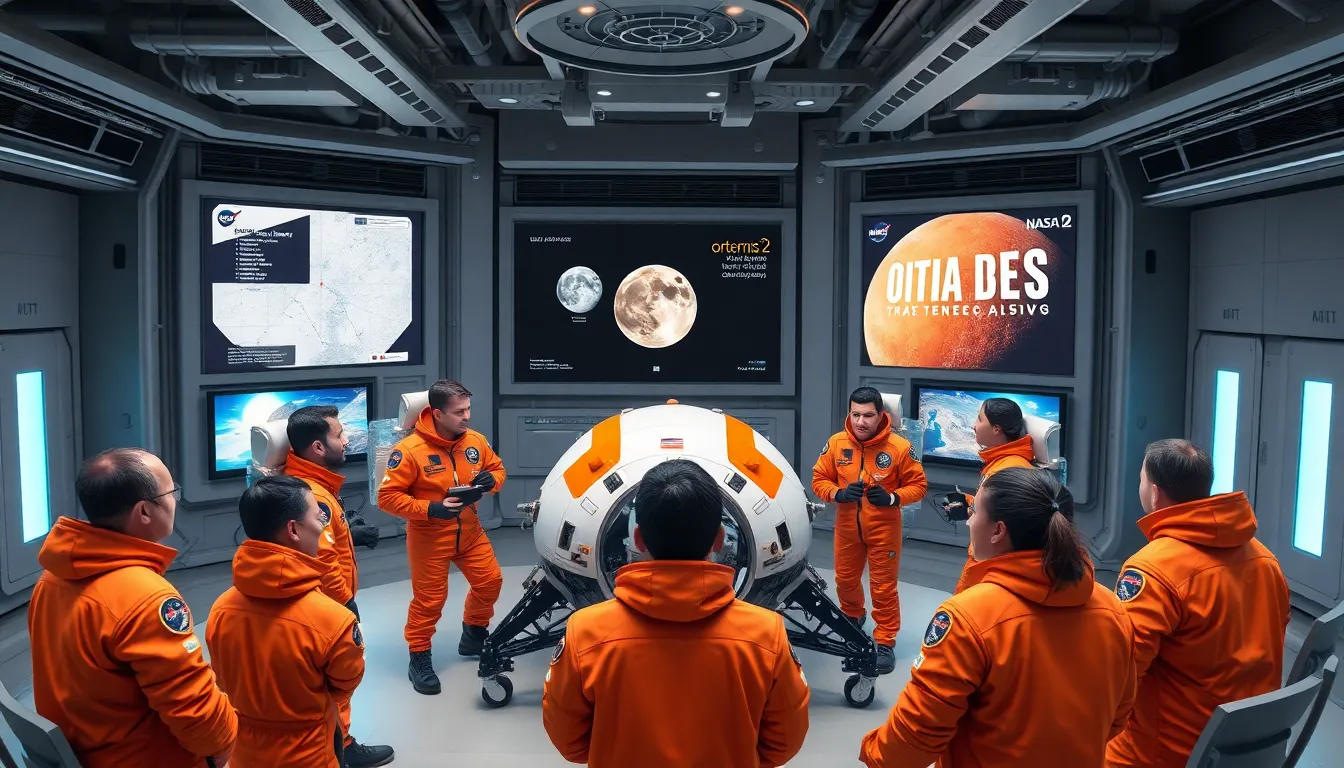Table of Contents
ToggleThe countdown is on for Artemis 2, NASA’s highly anticipated mission that promises to take humanity back to the Moon. If you’ve ever dreamed of sipping a cosmic latte while floating in zero gravity, this is your moment. But when’s the big launch? Well, it’s not just a matter of flipping a switch and blasting off.
Overview of Artemis 2 Mission
Artemis 2 marks a significant step in NASA’s goal to establish a sustainable human presence on the Moon. This mission serves as the first crewed voyage for the Artemis program, setting the stage for deeper space exploration. It has an objective of carrying astronauts aboard the Orion spacecraft on a mission around the Moon.
The mission includes four astronauts who will test life support systems and gather data during the flight. They’re scheduled to launch atop the Space Launch System (SLS) rocket. The journey will allow them to travel approximately 1.4 million miles over 10 days, eventually flying around the Moon before returning to Earth.
Preparations for Artemis 2 are extensive. Critical tests of the spacecraft and its systems are underway. Engineers focus on ensuring safety and performance, addressing any potential challenges ahead of the launch. Officials expect the mission to provide valuable insights into human spaceflight beyond low Earth orbit.
NASA aims to launch Artemis 2 in late November 2024, with the exact date contingent upon numerous factors. Coordination among various teams and successful completion of preceding Artemis missions play a role in meeting the timeline. Artemis 2 represents a pivotal moment in returning humans to the Moon and beyond, paving the way for future exploration missions.
Key Objectives of Artemis 2

Artemis 2 focuses on several critical objectives essential for advancing human lunar exploration.
Human Exploration Goals
Human exploration goals emphasize returning astronauts to the Moon’s vicinity, marking a historic arc for NASA’s Artemis program. Astronauts will test the Orion spacecraft’s capabilities during a journey around the Moon, validating crucial life support systems. The mission aims to ensure crew safety through rigorous evaluations under deep space conditions. Experiences gained from Artemis 2 will influence design and operational decisions for future missions, especially Artemis 3. Engaging with Earth’s gravity and lunar environment allows astronauts to prepare for longer deep space missions.
Scientific Research Aims
Scientific research aims encompass a variety of investigations to enhance understanding of the lunar environment. Data collected from Artemis 2 will inform ongoing studies of the Moon’s surface and radiation levels. Collaborations with institutions for data analysis will support future lunar science. Astronauts will conduct experiments aboard Orion, contributing to a more comprehensive understanding of space travel’s effects on the human body. These findings will aid in addressing challenges for extended missions to Mars and beyond.
Timeline for Artemis 2 Launch
The Artemis 2 mission’s timeline outlines critical launch preparations and events leading to the planned liftoff.
Scheduled Date
NASA aims for a launch in late November 2024. Monitoring various factors, the specific date will depend on team coordination and the successful completion of earlier Artemis missions. Progress in testing and development directly influences this schedule. Factors like spacecraft performance and readiness will play a crucial role in determining the final launch date.
Preparation Milestones
Extensive testing marks the preparation phase for Artemis 2. Key milestones include evaluations of the Orion spacecraft’s systems. Multiple tests involving simulations and real-world conditions ensure crew safety and mission success. Engineers focus on validating life support systems vital for human exploration. Ongoing assessments of propulsion and navigation capabilities will also occur throughout the process. Collaboration among NASA teams enhances mission readiness. Each success leads closer to the objective of sending astronauts around the Moon.
Importance of Artemis 2
Artemis 2 plays a crucial role in advancing human space exploration. This mission marks the first crewed flight of the Artemis program, paving the way for further lunar missions.
Contributions to Space Exploration
Artemis 2 supports the ambitious goal of establishing a sustainable human presence on the Moon. The mission provides insights into deep space travel, particularly for long-duration missions. Astronauts will test life support systems in real-time, offering invaluable data for both current and future endeavors. Understanding how humans adapt to space travel helps prepare for extended missions to Mars and beyond. The experiments conducted during this mission enhance knowledge about the lunar environment. Collecting data from Artemis 2 will significantly contribute to ongoing lunar studies.
Impact on Future Missions
Insights gained from Artemis 2 will influence the design and operations for future missions. Assessing the Orion spacecraft’s performance allows engineers to identify necessary improvements. Results will assist in shaping Artemis 3, aiming for a lunar landing. Collaboration among teams ensures successful implementation of lessons learned. Safety protocols validated during this mission will also enhance crew well-being for upcoming excursions. Artemis 2 sets a precedent for integrated scientific research on crewed missions, advancing the broader goals of space exploration.
Artemis 2 is poised to be a groundbreaking mission in human space exploration. With its targeted launch in late November 2024 the excitement surrounding this journey around the Moon is palpable. As NASA navigates the complexities of preparation and testing the focus remains on ensuring crew safety and mission success.
This mission not only aims to validate critical systems aboard the Orion spacecraft but also sets the stage for future lunar and Mars missions. The data collected will provide insights that will shape the future of space travel. As the world watches the countdown to launch every successful milestone brings humanity one step closer to a sustainable presence beyond Earth.







